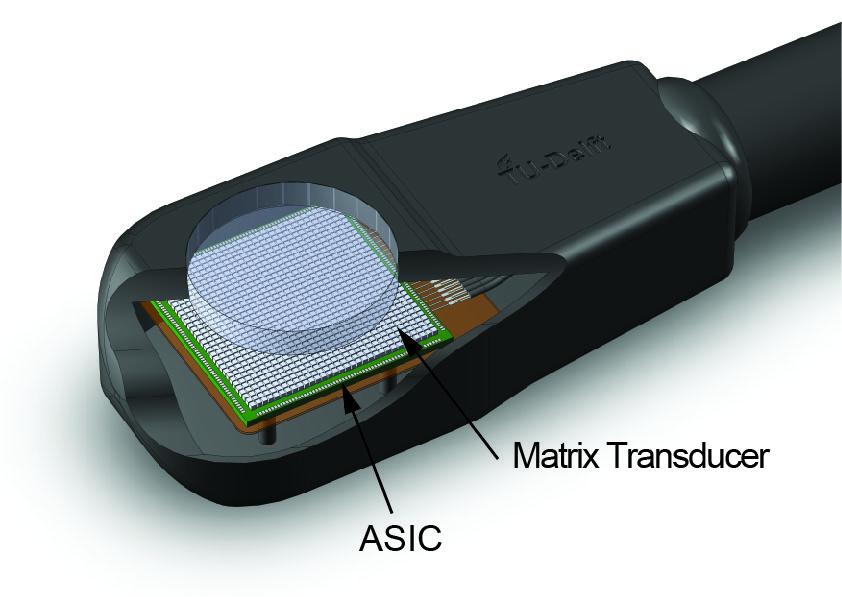Miniature ultrasound probes for real-time 3D imaging and monitoring of cardiac interventions (MICA)
Visualization of the human heart is critical for the accurate diagnosis of cardiovascular diseases and for guidance during cardiac interventions. Compared with other cardiac imaging techniques, such as magnetic-resonance imaging or computed tomography, echocardiography is more cost-effective and capable of providing real-time images. Transesophageal echocardiography (TEE) uses the esophagus as the imaging window to the heart, thus preventing interference from the ribs or the lungs. For TEE, an ultrasound transducer is mounted on the tip of an endoscope that is swallowed by the patient.
In conventional TEE probes, each transducer element is wired-out by a coaxial cable to an external imaging system. This drives the transducer elements with high-voltage pulses to transmit an acoustic wave, and records the resulting echoes, from which an image is reconstructed using beamforming techniques. In most cases, a one-dimensional (1D) transducer array is used to produce 2D cross-sectional images of the heart.
There is a clinical need for TEE probes capable of providing real-time 3D images of the heart, which are easier to interpret and provide more useful visualization during complex interventions. In order to obtain three-dimensional (3D) images, a two-dimensional (2D) array of transducers elements with over 1000 elements is required. This number far exceeds the number of cables that can be realistically accommodated by an endoscope. Therefore, to reduce the number of cables, channel reduction should be performed locally, using miniaturized electronics closely integrated with the transducer array in the probe tip.
In this project, we will develop the next generation of miniature 3D TEE probes, which will be small enough for use in small children, and for longer-term trans-nasal use in adult. Our group develops the required application-specific integrated circuits (ASICs). The key challenge is to reduce the cable count by an order-of-magnitude within the stringent power and size constraints of a TEE probe.

Project data
| Researchers: | Chao Chen, Zhao Chen, Michiel Pertijs |
|---|---|
| Starting date: | December 2012 |
| Closing date: | May 2018 |
| Sponsor: | NWO-TTW |
| Partners: | Laboratory of Acoustical Wavefield Imaging, Faculty of Applied Sciences, Delft University of Technology Thoraxcenter, Erasmus MC, Rotterdam, The Netherlands |
| Users: | Oldelft Ultrasound |
| Contact: | Michiel Pertijs |